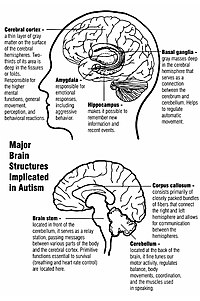
The cognitive profile of middle‐aged and older adults with high vs. low autistic traits
Sign Up to like & getrecommendations! Published in 2022 at "Autism Research"
DOI: 10.1002/aur.2866
Abstract: Cognitive differences in memory, information processing speed (IPS), and executive functions (EF), are common in autistic and high autistic trait populations. Despite memory, IPS and EF being sensitive to age‐related change, little is known about… read more here.
Keywords: low autistic; older adults; autistic traits; adults high ... See more keywords

A comparison of self‐report and discrepancy measures of camouflaging: Exploring sex differences in diagnosed autistic versus high autistic trait young adults
Sign Up to like & getrecommendations! Published in 2022 at "Autism Research"
DOI: 10.1002/aur.2873
Abstract: Camouflaging describes masking or compensating for autistic traits and/or related difficulties. Some evidence suggests autistic females camouflage more than autistic males, potentially contributing to delayed or missed diagnosis. Studies predominantly adopt self‐report measures of camouflaging,… read more here.
Keywords: self report; autistic traits; trait; measures camouflaging ... See more keywords

Sex differences in predictors and outcomes of camouflaging: Comparing diagnosed autistic, high autistic trait and low autistic trait young adults
Sign Up to like & getrecommendations! Published in 2022 at "Autism"
DOI: 10.1177/13623613221098240
Abstract: Many autistic individuals camouflage socially atypical behaviours. Evidence suggests autistic females camouflage more than autistic males. Although camouflaging may confer some benefits, it is also associated with negative outcomes including poorer mental health and well-being.… read more here.
Keywords: low autistic; autistic trait; diagnosis; diagnosed autistic ... See more keywords

EXPRESS: Frequent experience with face coverings for 10 months improves emotion perception among individuals with high autistic traits: A repeated cross-sectional study.
Sign Up to like & getrecommendations! Published in 2022 at "Quarterly journal of experimental psychology"
DOI: 10.1177/17470218221135585
Abstract: Face coverings pose difficulties for emotion recognition, but it is unclear whether improvement in recognising emotions from the eyes is possible with experience and whether this might be dependent on one's autistic traits, given the… read more here.
Keywords: face coverings; autistic traits; face; emotion perception ... See more keywords